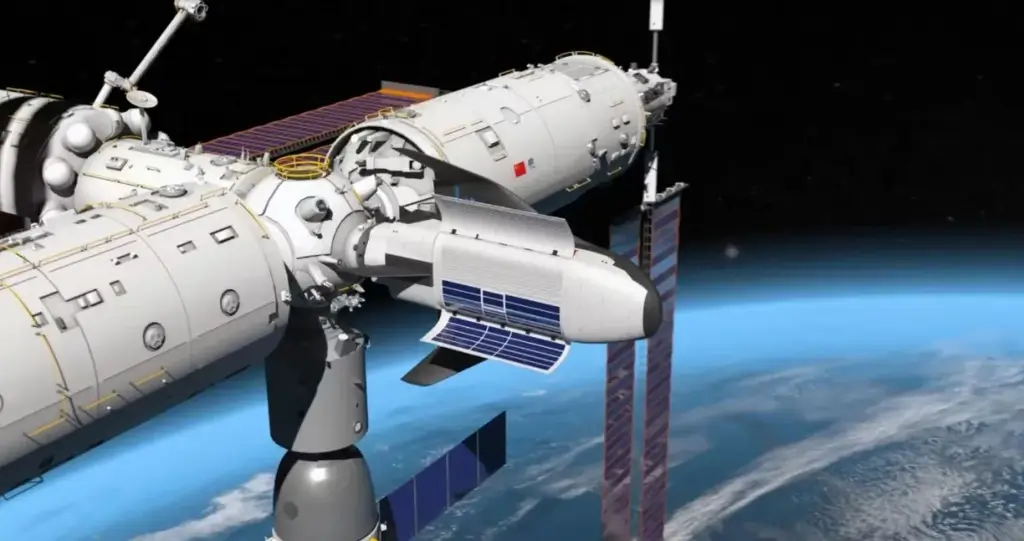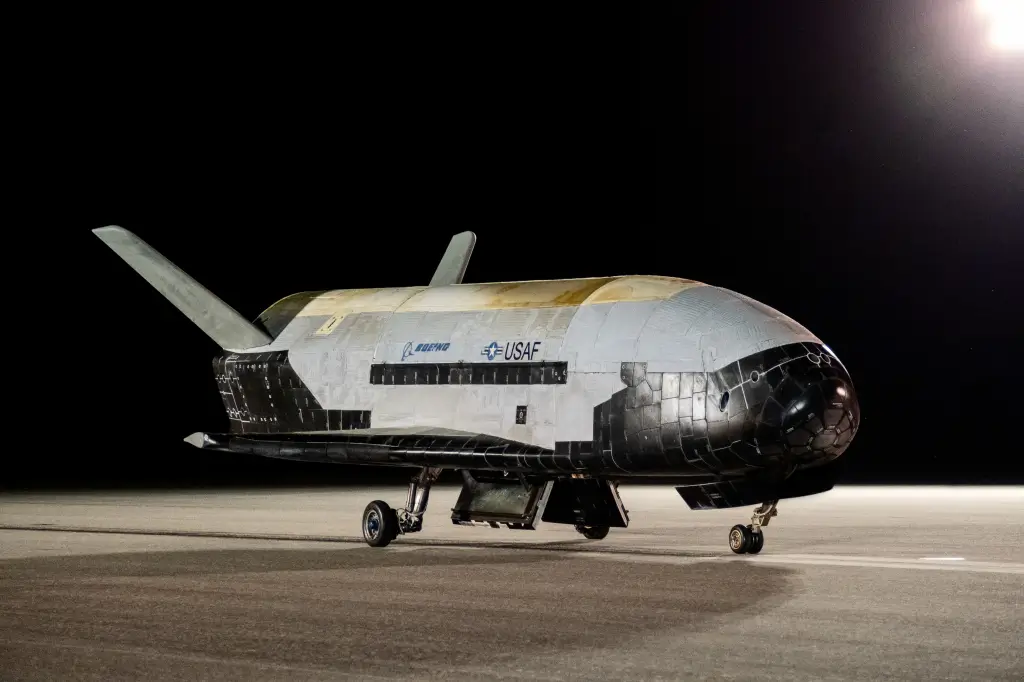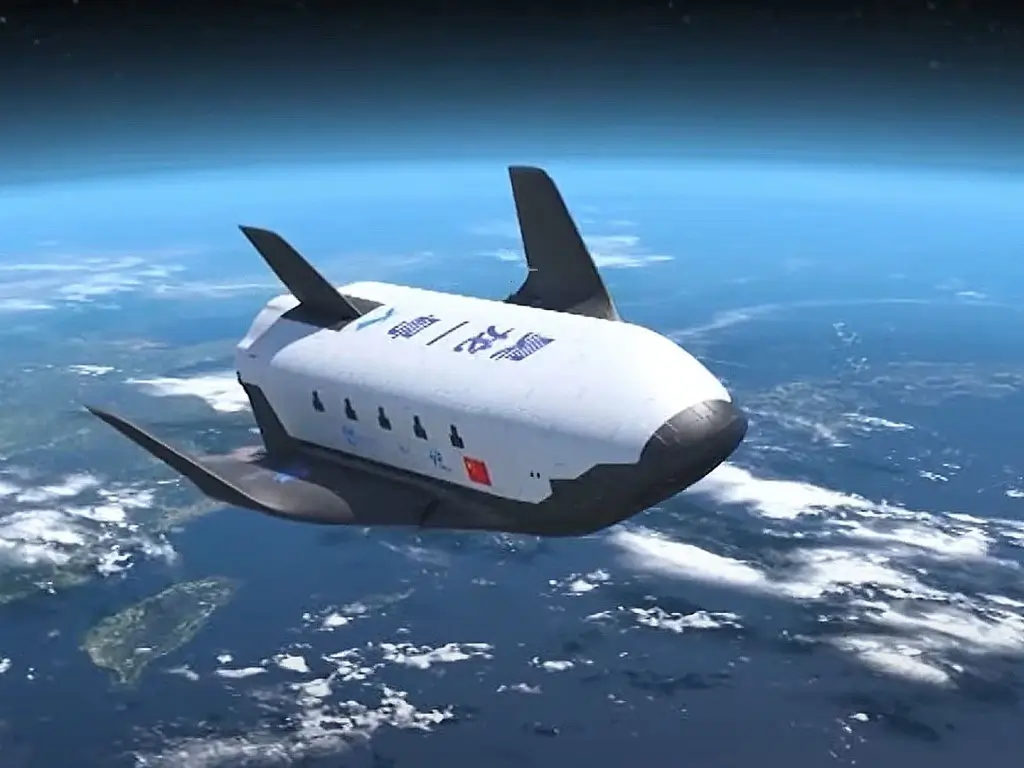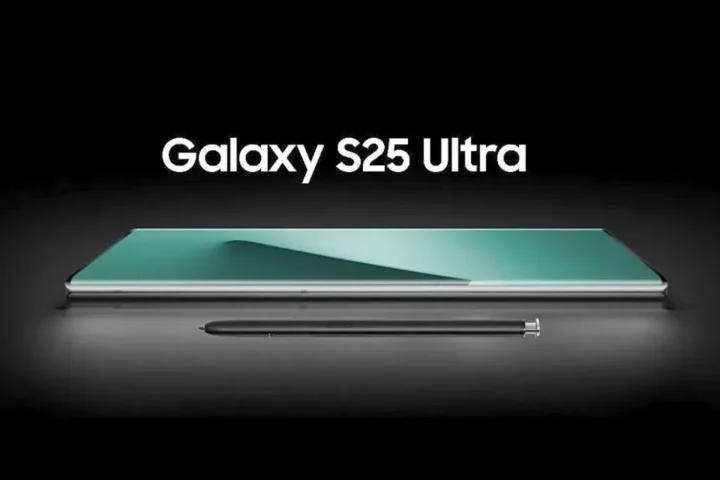China has made a big jump in its space technology with the launch of a Reusable Space Shuttle, named Hoalong, to transport cargo vehicles for the Tiangong space station. This advanced spaceship is designed to be cheaper, efficient, and set China on the map as a player in space travel. As the BIS outlines a vision for Tiangong to increase the number of modules from three to six, the Haolong shuttle might serve a critical function in supporting this orbiting laboratory.
Everything you wanted to know about this pioneering spaceship and its implications on interplanetary business.
Table of Contents
Haolong: China’s Reusable Space Cargo Shuttle
Design and Features
The Haolong shuttle combines features of both spacecraft and aircraft. It has a length of about 9.75 meters, a wingspan of about 8 meters, and looks rather like a delta-winged cruiser, which allows it to act as a spaceplane. This innovative design allows Haolong to:
- Launch atop a carrier rocket.
- Dock with the Tiangong space station for loading and unloading cargo.
- Return to Earth, landing on an airport runway like an airplane.
Official promo video of HaoLong-1 cargo spaceplane. Looking forward to seeing it fly!
— China 'N Asia Spaceflight 🚀𝕏 🛰️ (@CNSpaceflight) November 11, 2024
10m long, 8m wide, folding wings, 1.8t cargo capacity. https://t.co/c9eWa1glso pic.twitter.com/rdLJ8JuFTR
Fang Yuanpeng, chief designer of Haolong Shuttle, said the vehicle featured a ‘high lift-to-drag ratio’ that is ideal for a reusable vehicle. Compared to the Tianzhou spacecraft, this shuttle is smaller and lighter by half, which means it is cheaper and consumes less energy on Earth, or for those who want to deliver cargo to the space station.
Related read:
How It Compares to Current Spacecraft
At present, China has only two reusable space vehicles: the Tianzhou cargo return vehicle, which is self-decomposing during re-entry, and the Shenzhou spacecraft, which is partly designed to transport personnel and has a small cargo-carrying capacity. By introducing the reusable Haolong, China aims to:
- Reduce Costs: A reusable model minimizes the need for single-use spacecraft, significantly lowering operational expenses.
- Enhance Sustainability: This is far better than single-use vehicles for space exploration, as the shuttle can return to Earth in one piece.
You May Like
Japan’s First Wooden Satellite Takes Flight as Timber Looks to the Stars
Tiangong Space Station: A Larger Chinese Orbital Inventory
Tiangong space station was launched earlier in 2021 with a provision of having a crew of not more than six people on board. The Chinese Space Agency currently has three modules in the making and is planning to extend it to six modules in the future.

Image: WeChat/ Aviation Industry Corporation of China
Key highlights of the Tiangong space station include:
- Permanent Orbital Base: Tiangong serves as China’s hub for scientific research and international collaboration in space.
- New Modules and Telescope: China plans to add new modules and a space telescope capable of docking with Tiangong for maintenance and advanced research.
With the station’s expansion, regular resupply missions will become even more critical. The Haolong shuttle is expected to play a central role in maintaining Tiangong’s operations by delivering essential supplies and returning scientific experiments to Earth.
Global Context: The Race for Space Reusability
Reusable spacecraft have emerged as one of the hot areas of focus in space exploration activities around the world and have been promoted mostly by NASA and other private entities such as SpaceX, among others. Here’s how Haolong stacks up against its international counterparts:
NASA’s Space Shuttle Legacy
China launched a new hydroplane named Haolong that seems to be designed on the wing-pattern like now defunct Space shuttle of NASA. First used as an assembly vehicle for the construction of the ISS, the Space Shuttle epitomized the reusability of space launch vehicles for decades.
Challenges Ahead for Haolong
Despite its promising design, Haolong is still under development. The project recently secured a government contract for further design review and prototyping. Key challenges include:

- Technical Validation: Ensuring the spacecraft meets safety and performance standards for orbital and atmospheric operations.
- Funding and Timelines: Balancing costs while adhering to tight development schedules.
- Competition: Staying ahead of international rivals like SpaceX and Sierra Space in the reusable spacecraft domain.
Why Haolong Matters for China’s Space Ambitions
China’s investment in the Haolong shuttle underscores its commitment to becoming a leader in space exploration. By developing reusable technology, China aims to:
- Reduce Dependence on Single-Use Spacecraft: Shifting to reusable models aligns with global trends in space exploration.
- Bolster Tiangong Operations: Regular resupply missions will be essential as the station grows to six modules.
- Demonstrate Technological Superiority: Successfully deploying Haolong would solidify China’s position as a major spacefaring nation.











